Question of the Week: July 21, 2016
“Neil, why are my plants’ leaves brown around their edges?”
Browned leaf tips and edges fall into a category known as “moisture stress.” To explain it, I usually refer to the human body. When we have circulatory problems, they usually show up in our feet, fingertips, noses and ears – those places farthest from the heart. Leaf edges and tips are the plant parts that are farthest from the roots, so those are the places that get dry first and get water last once it starts moving through the plant.
So far it sounds like a very intuitive answer, but it’s actually probably the least precise answer I ever give. It still doesn’t point you in the direction of a solution, because many things can cause tip and edge burn of leaves. And curiously, not a one of them shows up in leaf samples and photos. They originate elsewhere in the plant or its environment.
Possible Causes of Moisture Stress
So you can see how diverse the causes can be, and so you can try to figure out what is going wrong with your own plant or plants, here are the most common causes of moisture stress, at least according to my years in the business. I’m going to list them in what I consider to be their frequencies of appearance.
• Plant got too dry. (Who would ever have guessed that one?)
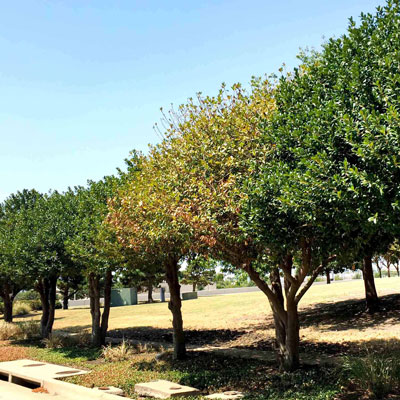
Nellie R. Stevens holly’s leaves turned brown due to drought. Photo was from August of last year, between the two monsoon seasons. Just one or two deep soakings could have saved it.
• New plant that has insufficient roots to maintain its top growth. Should have been watered by hand, not as lawn was being irrigated.
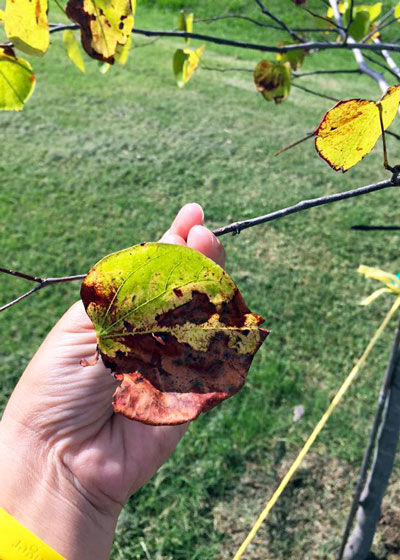
Young redbud tree is losing leaves, most likely due to transplant shock and insufficient roots to support top growth. (Photo posted to my Facebook page.)
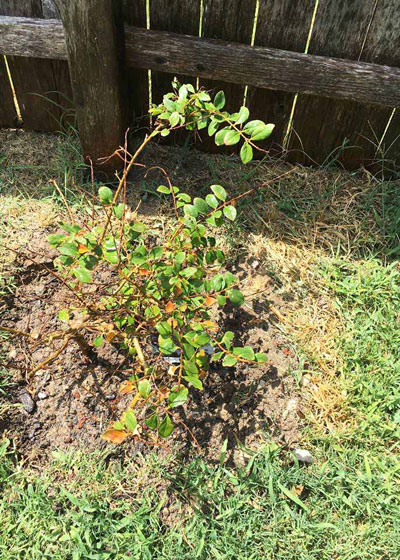
Crape myrtle suffering from one or more times of being too dry.
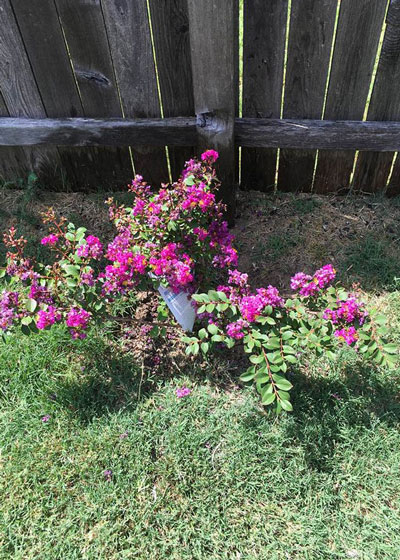
Same variety, same landscape, just given more water. (Photos posted by Facebook friend)
• Trunk damage from insects (borers) or by mechanical injury (line trimmer, mower wheel, hoe, etc.)
• Roots damaged by construction or mechanical injury.
• Choice of wrong plant for the site. Either it’s a type that doesn’t like Texas, or you planted a full-shade plant in full sun.
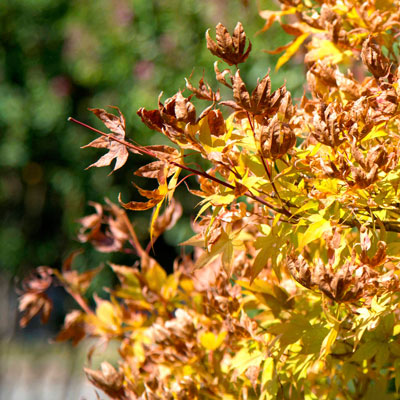
Browned or blackened leaf tips and margins point to moisture stress. But is it due to drought? Not in this case. This Japanese maple tree is getting too much sun and heat.
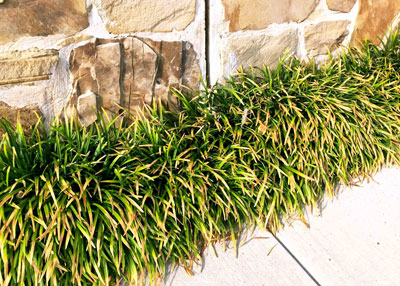
Liriope is an outstanding groundcover for shade or part shade, but full sun and reflective heat are more than it can handle.
• Drying winds. Some plants have leaves that can whip and fray in hot breezes.
• Excessive fertilizer. Fertilizers are mineral salts, and too much of them can pull water back out of the root system by reverse osmosis.
• Weedkiller damage, perhaps from application of weed-and-feed product too close to tree.
